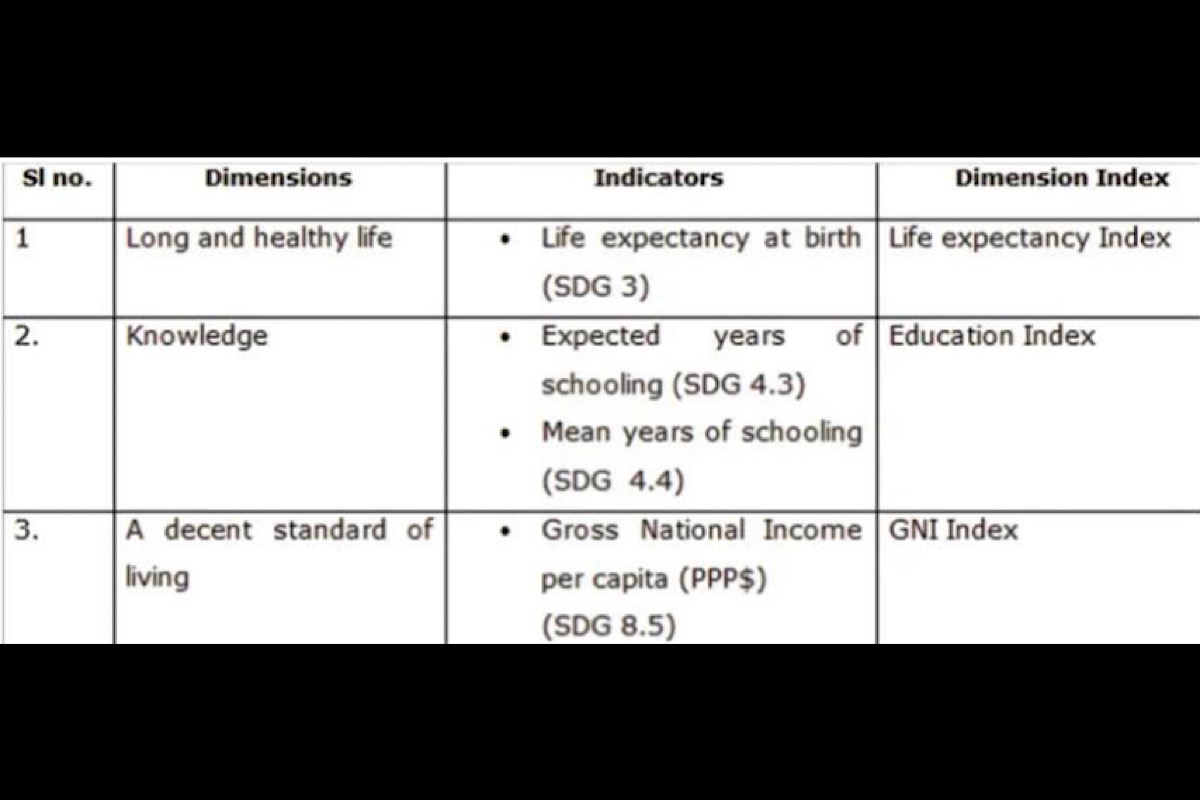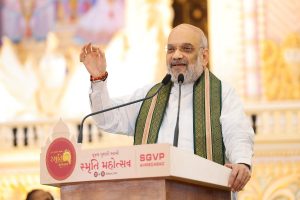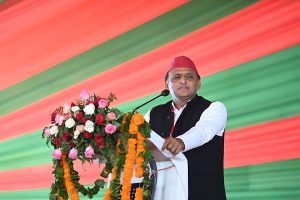The Green Revolution made India self-sufficient in foodgrains production and a leading exporter, but it is a tragic paradox that millions of people are going to sleep every night with pangs of hunger. The health consequences of hunger/starvation are enormous. Continued starvation/hunger results in starvation deaths and malnutrition.
Starvation deaths are reported. But the country is tumbling into a vicious circle of malnutrition. Hundreds of millions of people, predominantly women and children, are suffering from ‘hidden hunger’ ~ a hunger of micronutrient deficiencies. The Global Hunger Index (GHI) is a tool for comprehensibly measuring and tracking hunger at global, regional, and national levels and the findings are published by Welthugerhilfe and Concern Worldwide, both nongovernmental organisations fighting for ‘Zero Hunger by 2030’ and ultimate elimination of extreme poverty in the world’s poorest countries. The scores are based on the three dimensions of hunger – insufficient availability of food, shortfalls in the nutritional status of children, and child mortality (which is, to a large extent attributable to under nutrition).
The GHI score is calculated on a 100-point scale reflecting the severity of hunger ~ 0 (zero) is the best score (implying no hunger) and 100 is the worst. Using the data gathered during a 5-year period the GHI is published jointly every year. The 17th edition of GHI 2022, the latest report, is based on data from 2017 through 2021. The GHI 2023 would be published in the month of October, 2023. GHI 2022 reveals the grim picture of global hunger. Globally, as many as 828 million people were undernourished. India ranks 107th out of 121 countries.
With a score of 29.1 India has a level of hunger that is very serious. The child wasting rate, at 19.3 per cent, is the highest of any country in the world. The situation is likely to worsen in the face the current barrage of overlapping global crises ~ conflict, climate change, and the economic fallout of Covid-19. Since the mid-1980s, deregulation and liberalization policies have led to one of the most extreme increases in income and wealth inequality observed in the world. India stands out as a poor and very unequal country, with affluent elite. The gap between rich and poor shows no sign of narrowing.
The richest one per cent stake claim to 60 per cent of the country’s total wealth, and the 50 per cent in the lower rung collectively own only 2 per cent of national wealth. Indeed, we live in two India ~ one a country of glitter and privileges and the other of despair, rage and grinding poverty.
As the former Vice-President of India Hamid Ansari, said: “Inequality is the number one risk. The rising inequality is seen as a contributing cause for the rise of authoritarian leaders, often with a divisive agenda fuelled by sectarianism, xenophobia and nationalism. The basic culture of India is agriculture.” Most worryingly, rising inequality results in conflict, and threatens the stability of democracies. In the words of Joe Biden, the 46th US President, “corruption is just another type of tyranny”.
According to him, it is on par with cruel and tyrannical government rule. More precisely, it is a struggle that a common man or woman encounters every day in order to maintain his or her fundamental rights and other benefits granted by the Constitution. Corruption exists in every sector and at every level of government in the country, large or little. Along with vertical integration of corruption at various levels of the executive branch, there is also horizontal spread of corruption to other public institutions, including legislatures, parts of judiciary, media as well as independent professions.
Another unfortunate development is the politicization of corruption. The phenomenon of corruption touches every human being from the one living in slums to the person occupying the highest echelons of the State system. Just like the fictional Voldemort, corruption grows at every utterance of it. In the words of Kautilya, “Just as it is impossible not to taste the honey that find itself in the tip of the tongue, so it is impossible for a government assistant not to eat it up, at least a bit of king’s revenue.”
The most important finding of empirical research is that each and every type of corruption has a negative economic effect. An improvement of the corruption index (that is, reduction of corruption) can significantly increase the investment ratio and enhance growth. According to Paolo Mauro, in a country where corruption is widespread, a reduction in corruption by say 50 per cent can increase the growth rate by nearly 1.5 percentage points.
On the basis of calculations based on Mauro’s economic model, some economists opined that, all things remaining the same, if there were no corruption, Indian growth rate would have been nearly 8 per cent per annum in the 1980s and 1990s, rather than closer to 6 per cent. The Corruption Perception Index (CPI) is an index which ranks countries ‘by their perceived levels of public sector corruption, as determined by expert assessments and opinion surveys.’ In Transparency International’s 2022 Corruption Perception Index (CPI), which scored 180 countries on a scale from 100 (very clean) to zero (highly corrupt), India scored 40. When ranked by score, India ranked 85th among 180 countries.
The Human Development Index (HDI), released by the United Nations Development Programme (UNDP), measures a country’s achievement in key human development areas. It goes beyond only income criteria to measure the well-being of individuals.
The index is based on the human development approach, developed by Mahbub ul Haq, anchored in Amartya Sen’s work on human capabilities, and often framed in terms of whether people are able to ‘be’ and ‘do’ desirable thing in life. Calculation of HDI has three major indicators: (see table) The HDI is the geometric mean of normalized indices for each of the three dimensions. It does not reflect on inequalities, poverty, human security, employment etc. However, with the latest HDI value of 0.633 in the HDI Report of 2021-22, India remains in the medium human development category.
India ranks 132 out of 191 countries, behind Bangladesh and Sri Lanka. Although we have well over 20 languages and hundreds of dialects, we are accustomed to living with a diversity of cultures, religions, languages and different ways of life and thought. Indeed, this diversity has made us a tolerant people. Since 1947, we have perfected the practice of democracy with universal suffrage and regular elections which changed governments peacefully. Our record on pioneering democratic governance in the non-Western world is a widely acknowledged accomplishment. Our media are free and watchful. The abundance of questioning and arguing, facilitated by a vibrant media and robust democratic institutions is our great strength. We have an independent judiciary and the rule of law. Our military is strong but fully under civilian control. Our fastest-growing economy has eliminated famines, reduced poverty, and introduced new technologies, delivered quality higher education, healthcare and self-sufficiency. Despite these achievements, the glory of India appears to be deeply uncertain.
In the words of Amartya Sen: “It is not because an unblemished sunny day stands in the danger of being ruined by a freshly arriving shower, as was feared by Proteus of Verona. The uncertainty arises, rather, from the fact that together with sunshine, there are dark clouds and drenching showers already on the scene.”
(The writer in a retired IAS Officer)











